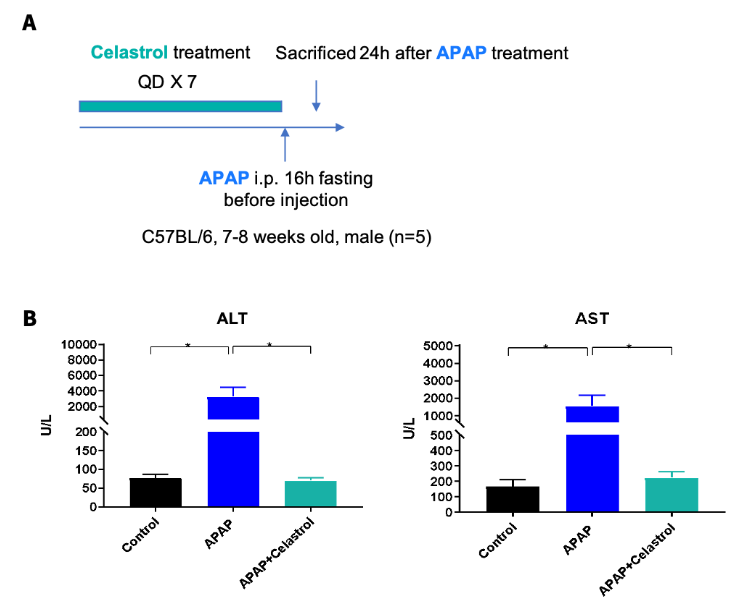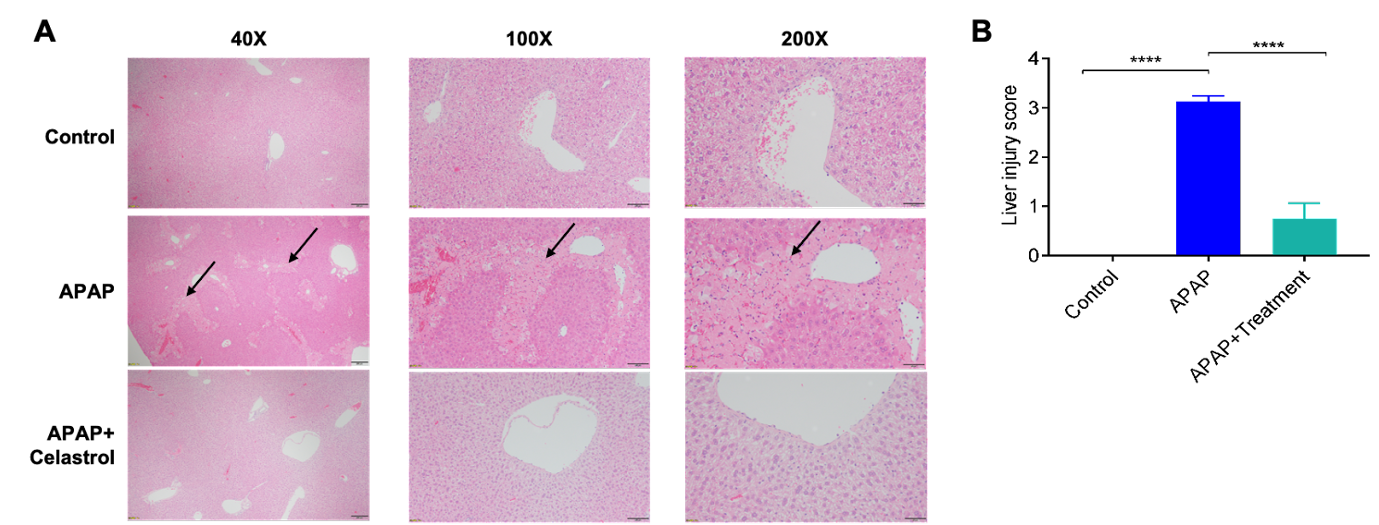Administration of acetaminophen (N-acetyl-p-aminophenol [APAP]) to mice is a commonly used experimental model of acute liver injury. Highly-reproducible and dose-dependent hepatotoxicity from APAP has translational importance because acetaminophen overdose is a frequent cause of acute liver failure.
Two hours after oral administration, APAP is taken up in the intestine and metabolized in the liver via glucuronidation and sulfation, followed by urine excretion. A small fraction (10-15%) of APAP is metabolized in hepatocytes by cytochrome P450 isomers to form the highly toxic alkylated metabolite, N-acetyl-p-benzoquinoneimine (NAPQI). Antioxidant glutathione converts NAPQI to a less harmful reduced form. However, when glutathione is depleted, increasing amounts of NAPQI can bind to mitochondrial proteins and lead to hepatocyte necrosis.
-
In vivo Efficacy of Celastrol in an APAP-induced Liver Injury Model
-

An acute liver injury model induced by acetaminophen (APAP) administration. (A) Experimental strategy: effects of Celastrol were evaluated prior to injection of APAP after a brief period of fasting. (B) Increased alanine transaminase (ALT) and aspartate transaminase (AST) levels were observed after APAP (300 mg/kg) administration in wild-type C57BL/6 mice, while Celastrol administration prevented this surge.
-
Protective Effects of Celastrol in an APAP Model
-

Histologic evaluation of Celastrol in an APAP model. (A) Coagulative necrosis and bruising of cells in the marginal zone of the hepatic lobules were seen to varying degrees in the livers of the APAP-only mice. Celastrol treated mice showed significant improvement. (B) Quantification of liver pathology score.
-
Celastrol Reduced Apoptosis in an APAP Model
-

Evaluation of TUNEL staining with Celastrol treatment in an APAP model. (A) TUNEL staining indicated that while APAP significantly increased the amount of cell death, apoptosis was prevented by Celastrol administration. Together, these data indicate that APAP administration provides a robust model of liver injury that has the potential to test novel interventions.



